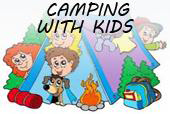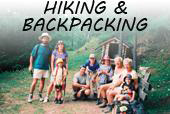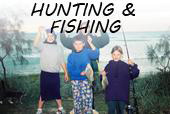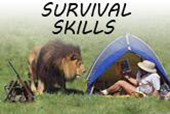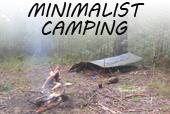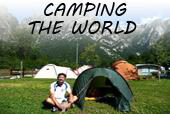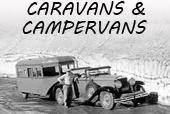The genet makes its first appearance of the night, just like it did seven years ago when I first visited Umani Springs Camp. “It’s a baby leopard” our guide Richard of the quaint little tented camp tells the new arrivals. For a moment the foreigners believe him until they realize he’s joking. The large spotted genet is in its preferred habitat by the swamp. Its one of the several species of genets, a cat sized svelte animal.
The next arrival is a marsh mongoose. First time I’m seeing one. It’s quite a cuddly animal and gnaws on the meat, till well satiated and then disappears into the swamp in front of the camp.
The morning sun lights the marsh and awakens the golden weavers whose busy chirping wakes us up and we step out of the tent to a brand new day.
“Umani or rather Umanyi is a Kamba word for ‘place of knowledge or place where everyone comes to’, Richard explains. We notice that the elephants have been near the camp during the night. Their dung is fresh and so is the loose soil on the terrain. “That’s our supply of brown bread, “say’s our guide teasingly pointing at the mound of the dung.
The enchanted forest is full of sky scraping trees fat figs and tall yellow fever trees. The path is laden with a wild strain of busy tizzies near the water and other colorful flowers. Overhead a troop of Sykes monkey race across the tree branches and a cacophony of sounds fill the air. Richard identifies the birds from their call-Narina’s Trojans and trumpeter hornbills. He has some interesting tales.
A few months ago, as he was taking visitors on a walk, he almost stepped on a python. He cried out to the family of three to alert them. But instead of running away they walked straight on thinking he was joking. The good thing is that the python was well satiated and slithered away while the visitors clicked away with the cameras. Another time, the trumpeting of the elephants brought him out to the swamp.
One of the young ones had all but disappeared into the marsh. Only the tip of its trunk and part of the face was visible. He dashed to the rangers office to get help, but they thought he was spinning a yarn. They arrived just in time to save the baby elephant from being swallowed a live in the mud. The water from the springs is in full flow with the rains. A gigantic fig tree stands near one of the springs.
“In the 1960s there was a forester here who used to sleep in the tree. He had five –inch nails stuck up in the tree to climb up. I found one of the nails recently sent it to him with a seed from the tree. “Richard tells us.
The gurgle of the crystal-clear water coming out of the ground is soothing. We spend a few moments sitting on the banks watching the water flow into the pool.” This one of the two large springs.” continues Richard.” There are many smaller ones.”
The forest is cool and we step on stones polished smooth by the water to cross over to the other bank. A marsh terrapin swims first to hide under the water plants. A cormorant perched on a log spreads its wings to dry in the sun while a dainty lily trotter delicately walks on the marsh lilies.
“Look”, says our guide suddenly. He is pointing to white little flowers but when he touches them they move like fairies on a twig. “These are the Kibwezi bugs.” It’s an annual event. In one of nature’s most opulent events, the Kibwezi forest is decked in these fairy-like snow-white bugs which feed of the sap of a vine during the months of August and September. They then metamorphose into earthy colored tangy small butterflies, some of which are fluttering around us.
“Kibwezi is a special enchanted forest,”says Simons of Umani Springs camp.” It’s a ground water enchanted forest.” The forest protects the springs which come filtered from all the surrounding Chyulu hills.
But its not been easy protecting this unique glade of enchanted forest where charcoal burning is rampant and demand for land ever increasing. “We are lucky that we came in when we did,” say the cam owner. Prior to that, there was little in the way of forest protection. “We had a forest officer who worked in cahoots with the charcoal burners and tree poaching was rampant.”
Coming out of the enchanted forest we walk through the silky webs of the tiny caterpillars to the camp, a simple rustic affair by the pond’s edge.
How to get to Umani
Your tour operator will organise a drive from Nairobi in a minivan. While staying at the several camps in the area, you will also be able to visit Kenya’s largest wildlife park-the Tsavo National Park, with its largest brown elephants (brown colour from mudbaths). This safari can also be combined to terminate at the coastal white sandy beaches thereby crowning your wildlife safari with some beach relaxation.



